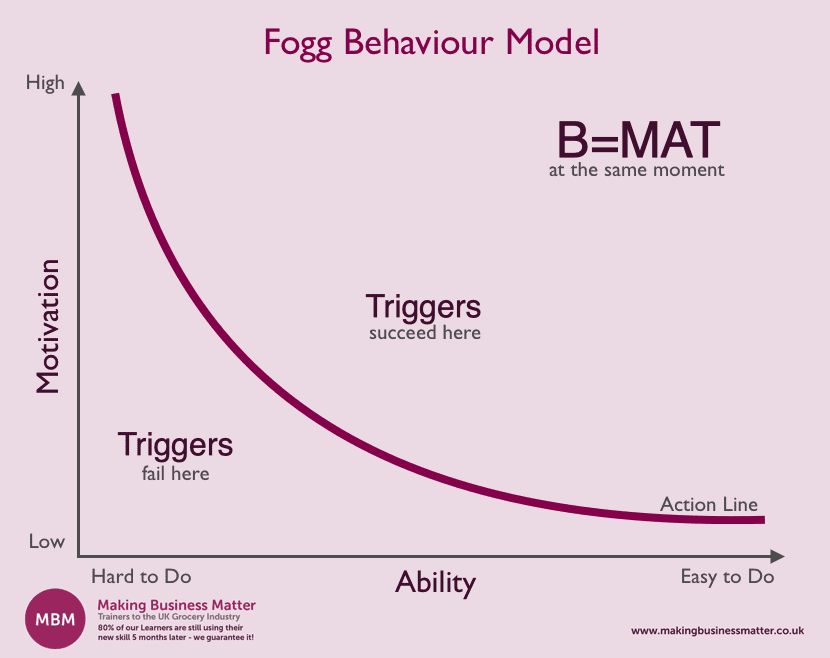How to Build Good Habits and Break Bad Ones
“We are what we repeatedly do. Excellence, then, is not an act, but a habit. ” — Will Durant.
To succeed or fail comes down to the power of habit, in particular, because we are creatures of habit. But before we look at habit formation strategies, let’s first find out why habits are important to success.
In his book How To Fail At Almost Everything And Still Win Big, Scott Adams makes a strong case for why you should stop setting goals. According to him, goals are for failures. Scott Adam is an American cartoonist best known for the Dilbert comic strip. He is also a persuasion expert and author of several bestselling books.
And the reason he gives for this rather harsh characterisation of goal setting is that when you set a goal, you never count any effort you put in before the goal is reached.
And often the goal itself becomes an impediment to success. In the book, Scott Adams argues that instead of focusing on goals, you should build systems.
The Word ‘Systems’?
In Scott Adams’s words ‘If you do something every day, it’s a system. If you’re waiting to achieve it someday in the future, it’s a goal.’ And he provides examples to illustrate this point. He explains that if you are seeking to diet, for example, losing twenty pounds in two months is a goal. But identifying and sticking to healthy eating habits daily is a system.
If you are a marathoner, finishing under four hours is a goal, but waking up early every morning to practise is a system. Reading about the concept of setting up systems instead of goals was an eye-opener for me. But I soon realised this concept lacked something. It needed to be part of another strategy for it to work even better.
Habit Formation and Its Importance
It occurred to me that while systems are better than goals, one has to learn how to build good habits and break bad ones, which is not easy. But why is it important to develop good habits?
It is habits that will form the systems that Scott Adams describes in his book. Good habits will result in an efficient system, and therefore success. On the other hand, bad habits will build inefficient systems, and derail you. So as much as we set goals for ourselves, we should focus more on building good habits, which in turn results in inefficient systems.
Learning how to stop a habit that derails you and replace it with one that serves you is at the very centre of building a system that will make you successful, whether that is in business or private life. We will see in a moment the components of a successful habit formation. But before we go any further let’s get back to basics.
What is Habit?
According to the Oxford research encyclopedia, ‘habit refers to a process whereby contexts prompt action automatically through activation of mental context–action associations learned through prior performances.’ This is a somehow high-level habit definition.
In simpler terms, habits are things we automatically do when we are put in a particular situation. We don’t consciously think about doing them. We just do them. The most basic things we do in life are habits of some sort. Walking, driving, swallowing, picking our nose, grinding our teeth, biting nails…….and the list goes on. Any routine of behaviour that is repeated regularly and occurs subconsciously is a habit.
It is important to point out that a habit could be good or bad. And that is why habit formation strategies include dropping or replacing undesirable habits. After going through the importance of habit formation, it is time to find out how you can change your habits.
Useful Habit Formation Model
Probably when you ask ‘how do I form a habit?’ you don’t expect the answer to be a formula, but it is. One expert who has come up with a very practical habit formation model is Dr BJ Fogg. He is respected for the work he has done in the study of how human behaviour changes and helped in designing behaviour models.
Dr BJ Fogg is the founder of the Behavior Design Lab at Stanford University. He has a deep understanding of behaviour change. He came up with the Fogg Behavior Model (FBM), which shows that for a behaviour to occur, three elements must converge.

The three elements necessary for building new habits are:
- Motivation
- Ability
- Triggers
Let’s look at each of these components and how to change a bad habit or acquire a good one using them together
Motivation
This is the desire behind breaking habits or forming new ones. The list of things that would push you to want to acquire new habits is long. Some motivations are personal such as the need to have a better-looking body, which could push you to start exercising or healthy eating habits. It could be the need to make more money, which could be a motivator to learn new skills or start a business. It could be the need to have better relationships with family members, which could motivate you to stop drinking, for example, and spend more time with them.
Indeed the list is long and unique, depending on the individual. The motivation could also be for an organisation, such as a company. For example, the desire to double the company market share or have new products in the market.
With that said, it is important to identify your motivators before you embark on changing your habits. The more pressing the motivation is, the more likely you are going to succeed with forming a habit. In fact, motivation is a critical variable in the Fogg Behavior Model (FBM). There is a special category of motivators I must mention, and that is rewards.
A Reward as a Motivator for Change of Habit
Rewards are effective as short-term, and in-the-moment motivators. Each time you go through a habit practice, it really helps to get a treat. Indeed, the power of reward in habit formation is one area that has been researched a lot.
One of the most cited studies is one that Anthony Dickinson and others, at the University of Cambridge carried out in 1985. In this study, rats were trained to form a habit of pressing a lever inside a cage. For the first round, the rats were given food every time they pressed the lever. In the second phase, the rats were given food that made them sick. Lastly, in the third phase, they were not given any food. However, at that point, they continued to press the lever nevertheless. After numerous repetitions, the action of pressing a lever became detached from the reward. And that was now a habit.

The same research also showed that the more the repetitions before the reward is removed, the higher the chances of success. This study has been replicated in some ways on humans and other animals, such as dogs, and the results seem to be the same. So a reward is a huge factor in the early days of habit formation. The reward can be anything from a meal you really enjoy at your favourite restaurant, a glass of really good wine to not having to wake up early in the morning.
Ability
This component is about the ability or capacity you have that will allow forming a new habit easily. In other words, how simple is it for you to adopt and practice a new habit? Dr BJ Fogg has identified five factors that influence the ability to form a new habit or drop a bad one. He calls them simplicity factors.
The five simplicity factors according to Dr BJ Fogg are:
- Time
- Financial cost
- Physical effort
- Mental effort
- Routine
Using these five simplicity factors, Dr Fogg creates what he calls the Ability Chain. When one part of the chain fails, then the other four don’t turn out very well.
Let me use an example to illustrate how the five simplicity factors work. Suppose you want to form a habit of writing a blog post for your business every day.

How Time Plays in Habit Reversal Training
For a high chance of success, this habit formation should take the shortest time possible, otherwise, you will find yourself struggling. It is better if it takes 30 minutes every morning to work on the blog post than if it takes an hour or two. In other words, the shorter the time you need to practice a new habit, the higher the chances of success.
How About the Financial Cost?
Forming a habit of writing a blog post should come at the least amount of financial cost possible. If you think you need to buy expensive SEO tools or superior graphics software, for example, then you might struggle with your habit formation. The financial element is often a considerable obstacle. And that is in part because it is a convenient excuse not to do anything.
What About Physical Effort?
If you can reduce the amount of physical effort, you need to write your blog posts the better. For example, you can get a good editor on your smartphone so that you can write there even when you are in bed. Getting up, putting on clothes and booting up the computer might be a lot of work. And it might become an excuse not to do anything.
How About Mental Effort?
The more thinking you have to do before and during the writing of the blog posts, the higher the chances that you will struggle with your habit formation. For example, you should not go for topics that require you to do a lot of research and understanding of complex concepts. Go for what you already know very well, and you do not need a lot of research to start writing about. The more you have to think, and the harder you have to work to understand concepts for your blog posts, the higher the chances that you will struggle with your habit formation.
How About Routine?
Finally, how much do you need to change your daily routine to accommodate your habit formation? If you need to substantially change how you usually do things to accommodate your new habit, then you might really struggle to achieve anything. But if you are going to change your routine just a little, then you have a higher chance of succeeding with your habit formation.
So in short, your habit formation should:
- Take the shortest time possible.
- Cost you the least amount of money possible.
- Take the least physical effort possible.
- Take the least mental effort possible.
- Have the least impact on your routine.
If any part of the Ability Chain is not reliable, then you may have to rely more on motivation, which Dr BJ Fogg says is not an ideal situation. In his words ‘ the problem with motivation is that it is not reliable. It shifts day by day, even minute by minute.’
Triggers
These are prompts, the things that remind you that it is time to practice the habit. Humans and other animals are wired to associate one thing with another. And the two things don’t have to be related. They just have to be burned in the human memory together. Marketers have always understood this fact, and they use it a lot more than most people can imagine.

I have the habit of taking a walk in the evenings. On my usual path is this ad space that, since I have known it, carries Coca Cola billboards. I have seen so many Coca Cola billboards there. And every time I pass by, I pay close attention to the ads. One thing that I have learned from looking at the billboard is that Coca Cola uses a lot of triggers to try to form habits in consumers.
Practical Examples of Applying the Triggers
Spark
Used when you have high ability, but lack the motivation to perform the target behaviour. For example, you need to start writing a daily ‘to do’ list every day. Your spark could be a picture by your desk that signifies achievement, organised and focused. Maybe a picture of a clock showing 5.00 pm and a tick next to it encouraging you to leave on time and satisfied.
Facilitator
This is used when you have high motivation, but a lack of ability. For example, you need to start writing a daily ‘to do’ list every day. Have the ‘7 principles of to-doing’ as a desktop picture/screen saver.
Signal
Used when you have high ability and you have high motivation. For example, you need to start writing a daily ‘to do’ list every day. Put your blank to-do list, starting with the date at the top, in your laptop, so when you open it, you start with your to-do list and not your email inbox.
How Do They Do It?
Almost every Coca Cola ad I have seen on the billboard, as well as those I see elsewhere, has to include an activity or something we enjoy. For example, a mouth-watering food on the dinner table, with a bottle or a can of Coca Cola next to it. Or a sweet family moment with the soft drink in the mix. They also portray thirsty models.
The point is to make you associate mouth-watering food, good family moments, or even thirst with the Coca Cola drink. That means when these situations arise you subconsciously want to drink a coke.
The eating moment, thirst, or family occasions become triggers for you to buy or drink the soft drink. If you want to succeed with your habit formation, then you may have to identify prompts or habit triggers of your own that you can use to keep you in the mood to practise.
A friend of mine puts his jogging gear near the door every morning. When he gets home from work in the evenings, the gear greets him at the door, and that puts him in an excellent mood to change and go jogging.
How Many Times Do You Have to Do Something Before It Becomes a Habit? And How Many Days Does It Take to Break a Habit?
It is hard to put a specific timeline because everyone, every habit and every situation are unique. The best way to measure is to see if you can repeat the habit after stopping the rewards. Nevertheless, there are those of a different opinion. For example, in her book Breaking Bad, author Shamyra Parker explains how you can take 21 days to break a habit.
Another great resource on how to break a habit is Is a book by Joe Dispenza titled Breaking the Habit of Being Yourself. Meanwhile, technology is providing solutions for habit formation. In particular, there are now habit tracking apps that can help you measure your progress.
So Why Do Habits Not Stick?
Habit formation will fail if any of the three components in Dr Fogg’s model,’ as well as any of their subcomponents, is missing. So, if you are looking for ways to stop biting nails, for example, you should make sure you’ve identified your motivators, weighed your ability, and put in place appropriate triggers.




